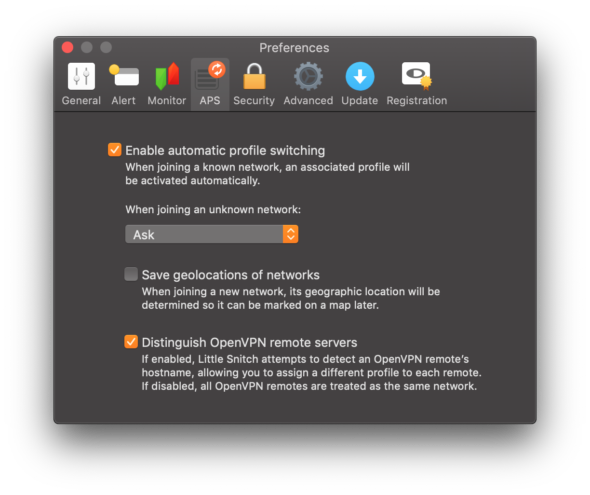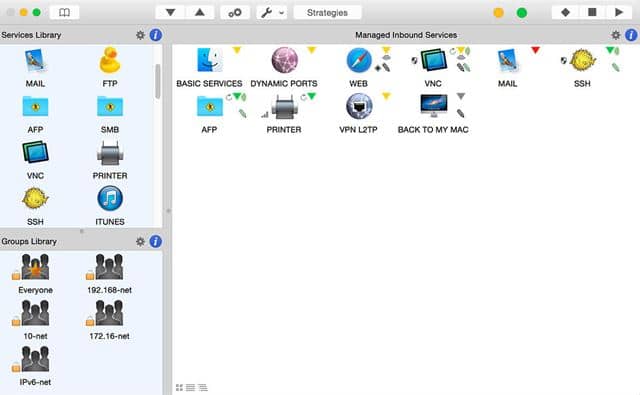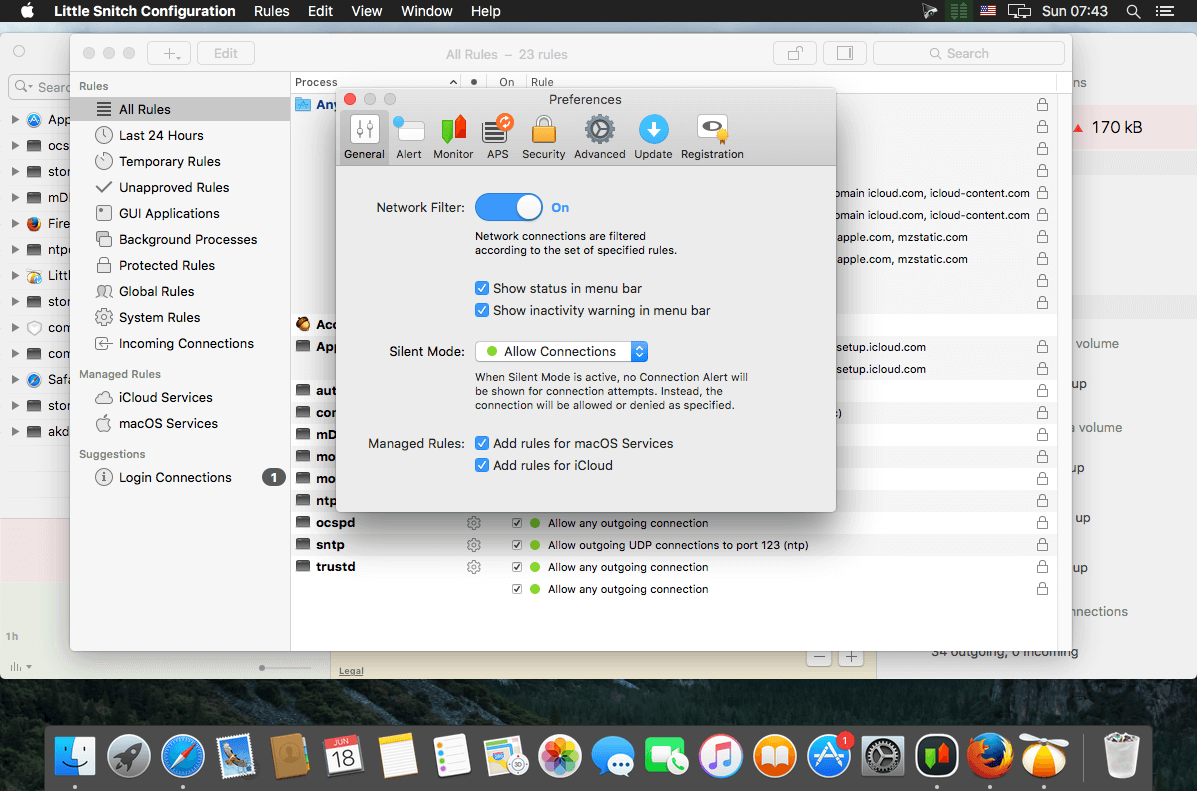

One very important usage for Little Snitch in my opinion, is for blocking software calls to home when you suspect the connection only serves to relay information about you and your system to the software vendor. Of course, you do need to know if what you’re allowing or denying is the smart thing to do…Ĭreating a rule from scratch is equally easy and simple, but is rarely necessary in my experience. The great thing about Little Snitch is that you really don’t need to know much about writing rules as the interface is very straightforward and self-explanatory. Here you can also create rules from scratch. You can convert these rules into permanent ones by going into the Little Snitch Configuration screen. On my system, the default action to be taken after 30 seconds of silence on my behalf is Deny!Īll actions Little Snitch takes as a result of you clicking on the Allow or Deny button in the alert dialogue only for one session, create temporary rules. What I mean is that Little Snitch gives you an option to automatically allow or deny a connection when you don’t take an action within a defined number of seconds after the alert dialogue has popped up. Denying and allowing can also be semi-automated. Other people may have other needs and therefore set Little Snitch to accept more or to deny more. I want to know when an application goes on a virtual trip into Internet-land. On my machine I only allow for a small number of applications to establish outgoing connections, and Skype isn’t one of them. And if you have turned on the advanced option, you can even allow or deny globally (for all users –and that includes applications– on your computer). You can also discern between allowing or denying for this one time or for all future connection requests. The dialogue has options to allow or deny all of Skype’s outbound connections, or to allow or deny only specific ones (based on ports or host names or IP-addresses, etc.).
The Little Snitch alert dialogue therefore pops up whenever I launch Skype.

For example, when I launch Skype on my machine, I have not defined any rule that tells Little Snitch what to do with the large number of outgoing connections Skype wants to make at startup time. In order to give you control over whether to allow or deny other connections, Little Snitch will pop up an alert window for each outgoing connection that has no rule defined.
#USE LITTLE SNITCH INSTALL#
When you install Little Snitch, a number of rules have already been defined that allow you to work with e-mail, browsing the web, etc. There’s also an alert interface that kicks in whenever Little Snitch encounters an outgoing connection for which it doesn’t find a business rule in its rules definitions database.

The Little Snitch user interface is only there to make it easy for you to create rules. That’s the real snitch: the network monitor that constantly and permanently watches your network traffic for outgoing connections. Little Snitch 2.2.3 is a set of applications of which at least one runs continuously in the background. Privacy concerns could be reason enough to have Little Snitch running. Even if you don’t mind applications downloading updates and data behind your back, Little Snitch will continuously watch your network for outgoing connections that you are otherwise unaware of and warn you, so you can take actions.
#USE LITTLE SNITCH DOWNLOAD#
Many applications will regularly connect to the Internet and link to data or download data that you would rather not have on your system. The “always on” paradigm that is considered normal today has its disadvantages.


 0 kommentar(er)
0 kommentar(er)
